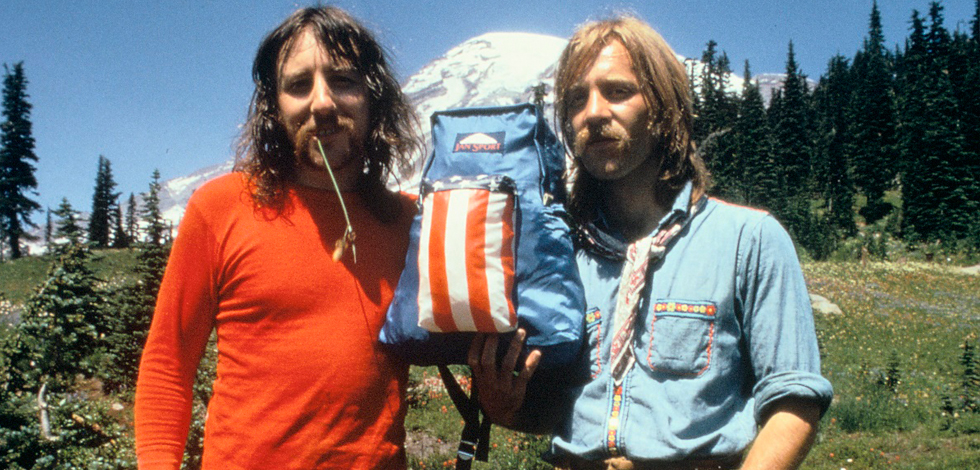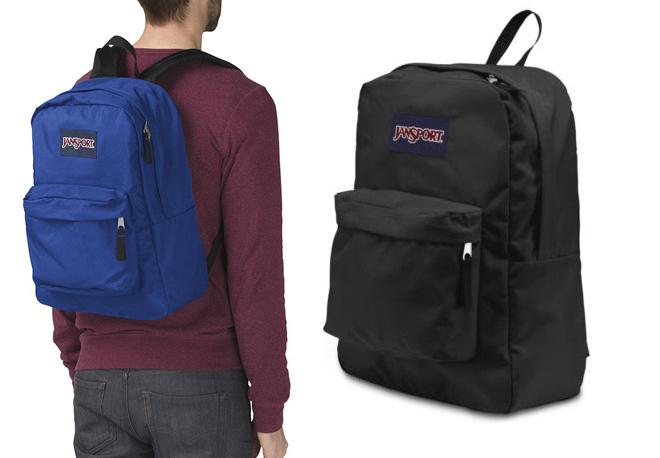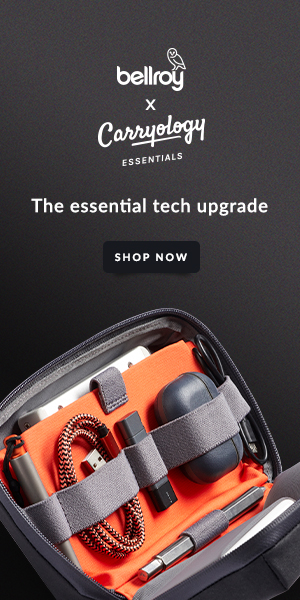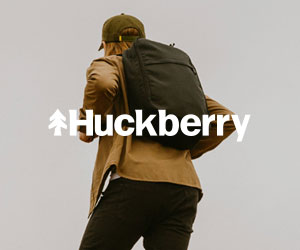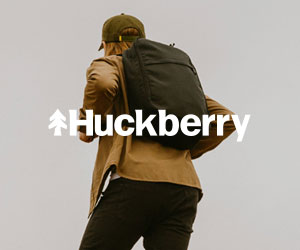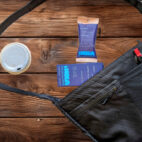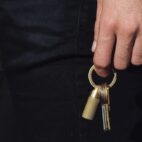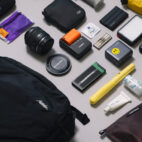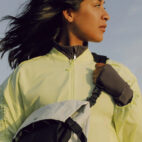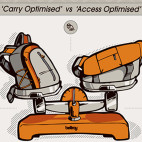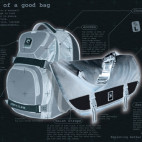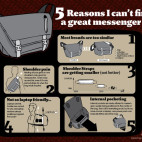Cult Bags :: The Birth of the JanSport Superbreak
There are few carry brands that hold a claim to fame as true pioneers but JanSport is one of them. This influential and innovative brand boasts a global reach which has grown from humble beginnings, hard work and dedication to creating bags that are affordable while remaining functional and reliable. In order to find out first-hand about developing one of the biggest carry producers in the world as well as one of their most instantly recognizable designs – the Superbreak backpack – we went straight to the source, JanSport co-founder Skip Yowell…
–
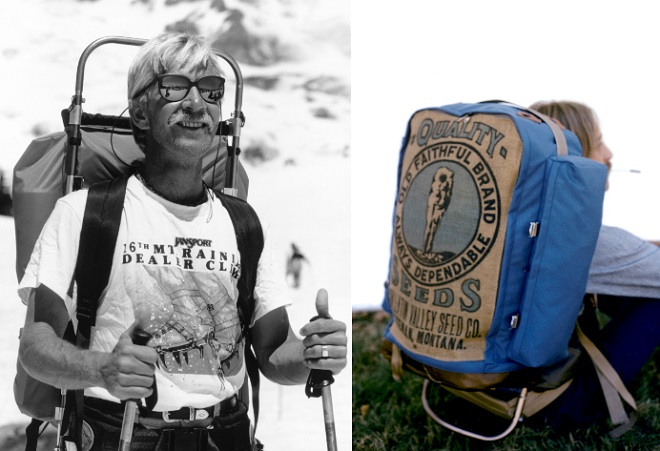
Douglas: Skip, thank you so much for taking the time to just catch up and talk about bags today. Jumping into the questions, as far as your perspective, did you ever think that JanSport was going to be such an iconic brand that would define youth culture? I know it wasn’t necessarily what you started the brand out to be, but it’s pretty remarkable to see where it’s at today, and the perception of it.
Skip: We started off as a backpacking and mountaineering company making packs for those activities. But early on, there was one point where I thought, “Well, this may become a bigger thing.” We were selling in the University of Washington. They had a bookstore, and the bookstore had a unique situation. They had a sport shop right in the center that was selling Alpine skis, tennis, and backpacking and mountaineering gear.
And of course we were selling them our backpacking and mountaineering packs, and we designed the bag called the Ski And Hike. We were the very first to put a zipper in a big panel pack versus a top loader with a flap, and we extended that into the small Ski And Hike, which is really meant for day-hiking and cross-country skiing, which was really big at the time.
We had made these really small bags with a zipper in them and one outside pocket, and the bookstore buyer called me one day and said, “Skip, because it rains so much, students are starting to buy your Ski And Hike and putting their books inside. You got to put something on the bottom.” So we put some vinyl at first and then leather later on. And he told his buddies in Oregon and Idaho, and we became real good friends with the buyer. And he said, “You know, you guys ought to start selling in college bookstores.” And as we started to do that, at the time I told Murray, “You know, I think potentially this bookbag daypack business of ours could be much bigger than our outdoor business.” And obviously down the road that’s what happened.
Douglas: Obviously based off your history you have a passion for the outdoors and adventure. Did you ever find yourselves at a crossroads where you had to decide, “Whoa, do we go a little bit more after this daypack business versus staying true to our roots by just focusing on outdoor equipment?” What was that process of thinking?
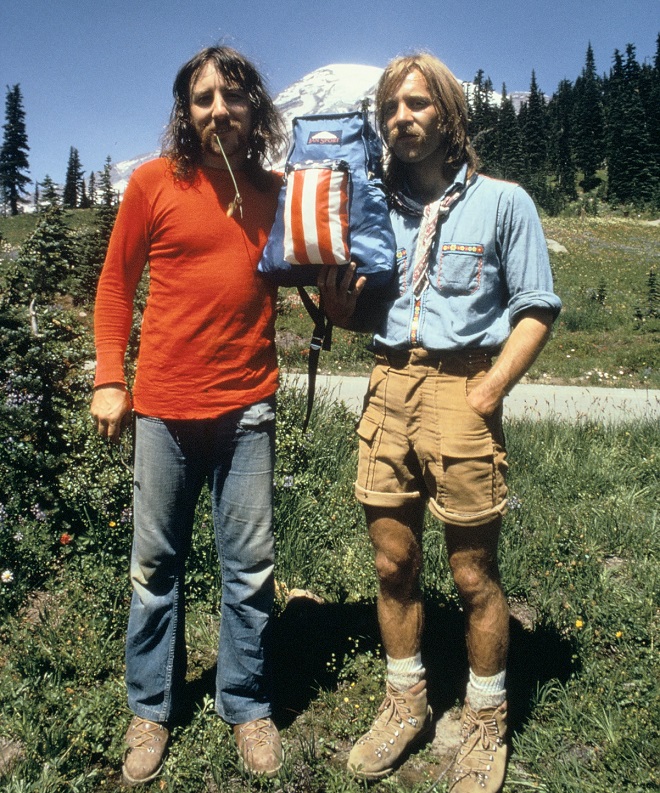
Skip: Yeah, we were still very motivated for the outdoor side of the business because it was great for the image of the brand. It really taught us a lot of things from workmanship and materials that would benefit the bookbags. And I think part of it was our passion for what we really enjoyed doing and why we started the business. So as we progressed on with that business, equally on the same side we were making the first dome tents, and then sleeping bags, and really rounding out that backpack and mountaineering side – which sometimes you have a little bit of luck and we did in the sense that for a lot of the young students and college kids of those days, backpacking and escaping was becoming very fun and cool. It was right with the times. From the very start, there were only really a handful of outdoor brands, and we were at the right place at the right time and had the motivation to keep going.
But during the growth of the bookbag daypack business, it gave us diversity in the sense of distribution, of selling our product. And to be just pigeonholed to the outdoor specialty shop back in the ‘70s and early ‘80s was tough for a lot of brands when there became too many brands and too much competition. When I go through my old magazines from that era back then, there are so many names that are no longer around. And it was just because of not being real diverse. I think that was another side that wasn’t really beneficial to the brand long-term.
Douglas: All great points. As far as how the product evolved, when you start thinking about the materials and the sections, nowadays we designers are all spoiled because we can go to the Internet and just search around, or you can go down to your local REI or outdoor store and basically just kind of educate yourself on the fly. At that time when you guys were starting, what was your process as far as educating yourself around materials and different resources that you had?
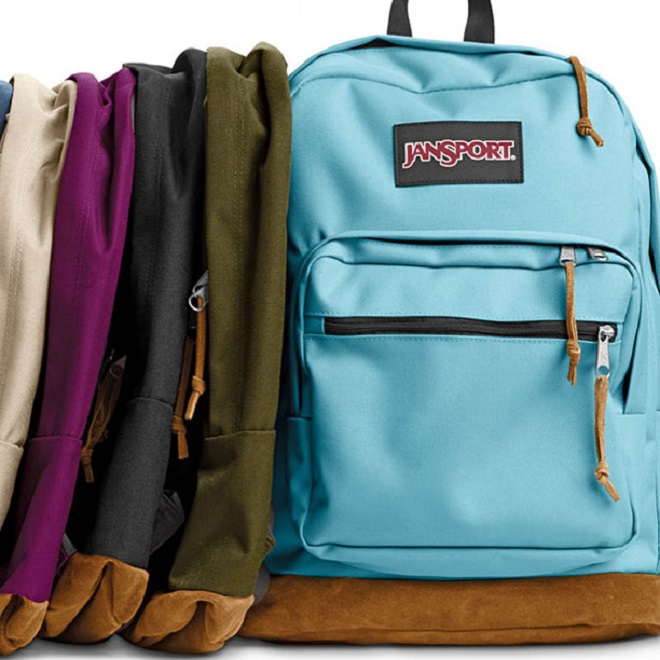
Skip: Yeah, I think that’s a good point, because back at that time you had all the fabric mills and everything down in the South, and New England had the hardware parts, and Southern California had foam. And we would have sales reps that would call on us showing their wares in a sense. And these people, obviously very knowledgeable, had been selling these kinds of fabrics to other types of industries. So many things evolved out of – as it still does today to some degree – out of the military developing a raw material, and then later one gets used by the general manufacturers, and consumers benefit.
In 1970 one of the sales reps who sold a lot of cloth in Southern California had this new fabric that was a tire yarn. And it didn’t work out in tire so they wove it into fabric. And it wasn’t branded at that time, but later on became branded Cordura. And we got the very first 50-yard bolt of that. We made up some samples and everybody thought it was a real rugged canvas, although it was a nylon and it was obviously very durable, somewhat expensive, and somewhat heavy. But that launched us from the basic frame pack cloth we had been using to 420 nylon. We went into that Cordura, which really kind of set us apart from any other bags of that time. Then later on with the evolution of fabrics, we moved into a lighter Cordura 5000 – or a 500 by 1000. Then we evolved into the 600 Denier Polyester, which is obviously the staple today, because it was a little bit lighter.
And one of our kind of disciplines over the years, it was really easy to make very expensive, amazing different designs but we also really wanted to make designs that were affordable for many consumers. And so a combination of all those factors ended up to kind of where the Superbreak is today, which is constantly evolving with prints and all sorts of other elements.
Douglas: As far as your perception of what makes Superbreak such a great product, why do you think it still resonates not only with the youth, but in general just the consumer who’s looking for a great bag?
Skip: Yeah, I think there is so much simplicity. Just a quick story – years ago I took my daughter in the showroom. She was in high school. There were 100 different styles in there, and I said, “Gwen, pick out the bag that you want for yourself for school.” And she went to the Superbreak. I was kind of shocked because we had some other really high-end bags with more pockets and everything else. And I said, “Why the Superbreak?” She said, “I really like the simplicity of it.” And so I think that’s always been a real key feature of it.
Second of all, we were the first to put a zipper in a pack. We really created the look of that style. JanSport has always been an authentic company and an authentic brand. So when you go all the way back to 1970 and you start seeing all these JanSport packs, and mom would later on maybe buy one somewhere else and the straps would blow out, somebody else would say, “You got to buy a JanSport. They hold up. They have a lifetime warranty.” And so slowly over the years all that momentum and the confidence of the consumers and the goodwill of a great-quality product that we had made just kept building and building and building. And so we obviously had a history of the product, the simplicity of the design being very functional. But I think the durability and the quality aspect because some of the packs we used in mountaineering probably didn’t get as much abuse as the daypack being dragged around 365 days of the year. So all that history has continued worldwide now for quite a few years of that particular bag and the brand.
I was just in the Philippines recently. We’ve had a long partner there for 16 years. You go to the college campuses which I’ve spoken in, many of which in the Philippines, and you see 80% of the bookbags are JanSport. It’s amazing.
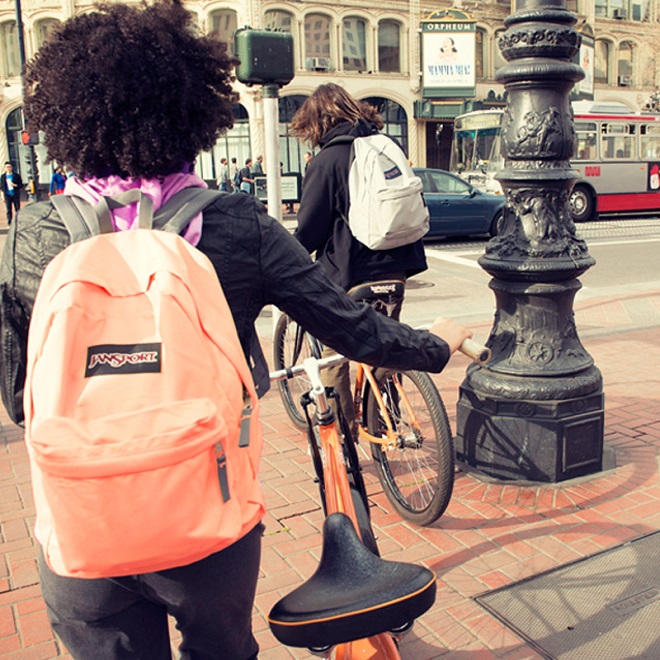
Douglas: Wow. You mentioned how you put the zipper on top basically as a main closure. Do you remember that time or that specific moment where you guys were just like, “Hey, why don’t we put a zipper on that front top and let’s see if it works?”
Skip: Yeah. One of our strengths from the very start was that Murray, Jan and I were motivated – it wasn’t always about the money – to create a business that fit our lifestyle and to be very innovative. And I think there was really a side of us that was very competitive. And as we would go out and test product every weekend and bring it back and try to improve upon it, we’d make up the prototypes and we developed a network of friends and climbers, and we had a very small retail store in the first factory at North Seattle. We had a cowbell on the door. Whenever the cowbell would ring, either Murray, Jan or myself would go out and wait on the customer, who was usually sent up to us by either Eddie Bauer, Triggers or REI. And they wanted something custom or unique. So we actually learned quite a bit from those hardcore customers, which is something I mentor the young people to do: really always understand the consumer, their needs, and what they’re doing.
But in trying to get distribution farther than outside of Seattle, we would go and I would load up our blue delivery van and drive down to Oregon, over to Idaho and sometimes the fringe of Bozeman in Montana and then back. And so you would do your clinics and would show our bags versus at that time probably Kelty in the big packs area was our biggest competitor making their welded frame. Because of the panel load on it, there were so many different feature benefits that it really took off right away, and for the same feature benefits it extended down into the daypack bookbag.
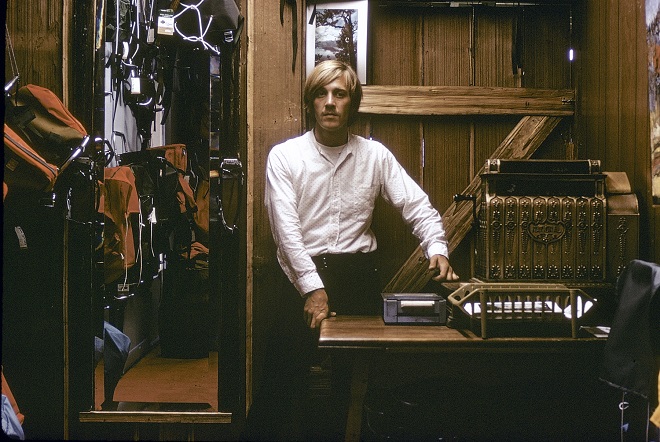
Douglas: I would say that over the last five years there has been a really big resurgence of vintage climbing, vintage outdoor, vintage workwear and so forth. But there’s a fine line between what’s stealing and what’s inspiring. Do you look at it as flattering when you see companies out there taking something that’s really authentic to JanSport; and why do you think the youth culture gets sold into these fake stories from these other brands?
Skip: First of all, our boys and I prided ourselves in being very aware of what’s going on and what our competition is doing. But on the same end, I’m more concerned about staying one step ahead and being innovative. You’re just going to get product that gets copied, and that’s just a way of life unless you’re able to get a patent on it, which tends to be more in the hardware side of things.
Douglas: To transition to your personal carry, when you look back in high school what was the equivalent bag? How did you carry books in high school, and what was your means of transportation back then?
Skip: When I was in high school, you carried your books under your arm, you put them in a locker, and the most creative thing anybody did was maybe tie a belt around the books. There was no daypack or bookbags. My first exposure to packs actually was my dad’s army pack. And when I joined the Boy Scouts and we were getting our hiking merit badge, I went to the army surplus store and bought an army surplus bag. That was my pack. And then later on I had a Trapper Nelson, which was actually a wood frame. I got that original bag. I gave it to Gary Neptune to put into Neptune Mountaineering in Boulder, Colorado, where he has a big display of old packs and everything. So my exposure was a little bit unusual in the sense that there was no daypack or bookbag. And so we created that business out of the University of Washington. Before that you had big European climbing rucksacks. That was something that REI carried obviously back when they started their co-op here in Seattle.
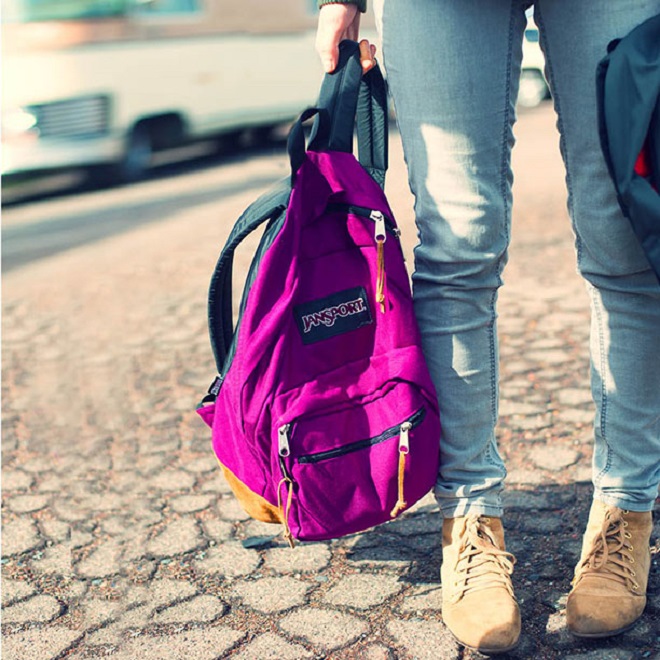
Douglas: That’s pretty rad. As far as the shoulder straps, maybe specifically on the Superbreak, how did you get to the shoulder straps that are current today, and has it been something that’s been carried over since the original Superbreak, or has it kind of evolved over time?
Skip: Yeah, it’s especially probably the pads. The design is made so much the same and similar and everything, but the evolution of better pads has always been because they get the most abuse, and everybody loads up almost more than they can carry. So early on, we established a lot of automation for making packs. There was just an automation of our production line as the volume grew. And that bag eventually even went to laser-cutting of the fabric, which was pretty creative back in the latter ‘80s and ‘90s. So all of those elements of that production, and the automation of it, helped us to stay in a very affordable and competitive price range, but obviously build in the quality of the product that we wanted to build into it with good raw materials.
Douglas: That’s pretty amazing to think about the innovation side. Speaking of innovation, last year I had the opportunity to go down South and see an automated production line for denim jeans. The Superbreak looks like it’s going to be an icon that continues to go out for generations. Have you ever dabbled in that world as far as manufacturing and the idea of automating a complete backpack?
Skip: Many of us are overseas in places where the labor is still very inexpensive relative to the United States. So there’s still that physical handwork on our particular products. Of course, denim jeans command in a lot of cases now a much, much higher price point to invest into the technology to do that automated equipment here in the United States. But at the end of the day, it’s up in that stratum of 7 For All Mankind, et cetera. So potentially we would like to actually see someday more manufacturing come back to the United States in our particular category. We just haven’t figured out a way to do it yet, but there are a lot of young, bright minds at JanSport. JanSport has never always been just Skip Yowell; there are a lot of great people through all the years, and we have a lot of great people who are smarter than I am today there who maybe hopefully can make some of those things happen.

Douglas: Absolutely. I’ve heard about the collection of items you’ve gathered during your various adventures. What inspired the collecting?
Skip: My good friend Lou Whittaker had the guide service at Mount Rainier, and he’s the one who really taught me mountaineering. His twin brother, Jim Whittaker, was the first American to climb Everest in 1963. So I started going on expeditions with Lou. And we went to Tibet and Mount Everest in ’84, and I really learned from him on Mount Rainier. But Lou said, “You know, I always pick up something from my trips and expeditions. It reminds me when I’m back home about that experience.” So from that I was always also kind of a keeper of all our early products and photos and catalogues and magazines, and those bags that I dragged out of the basement are now in the JanSport Heritage line. And there are certain places in the world that we do an amazing amount of business with our heritage packs. It’s almost hard for me to believe sometimes. So saving a lot of those things has always been to an advantage from the business side, but from a personal side I’ve always just been really fascinated with product. I still love product, and I have an old mercantile building that’s full of wooden skis and all sorts of things that are in some ways an indirect influence to pack products that today we have.
The Skip Yowell collection has been a fun project with lead designer Eric Rothenhaus. We keep adding a couple new products, and a couple products will go away. But it has a real heritage look with leather and really quality materials, but also really contemporary features on the inside to fit today’s lifestyle with laptops and iPads and electronics and adventure travel and urban travel. So you always have to keep moving forward.
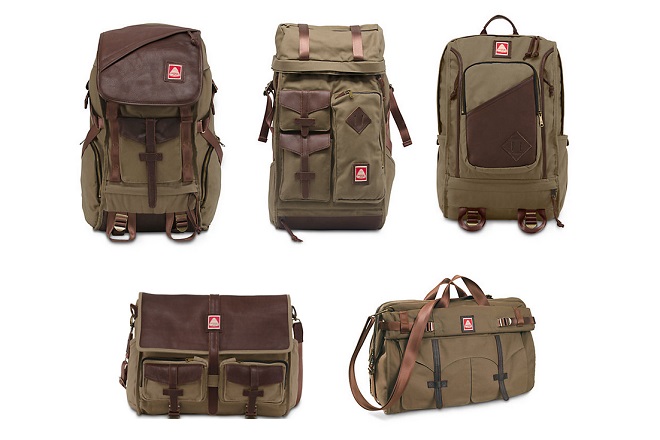
Douglas: Right. I know you’ve got to go through the challenges of just owning a business, selling a business, and you’ve been very fortunate to continue to be a part of the brand. I’m sure you could have checked out at any time that you wanted. But what kept you involved, and what was that driving force? And the second part of that question is, I’m sure there were some tough times especially in starting a new brand – what made you never quit?
Skip: Yeah, there were some tough times in the early times. My uncle had quite a bit of money into JanSport, and he wanted to return and build a home on Whidbey Island, and our credit line would only go so far at the bank. So the financial side of the business was a big challenge. But we loved the business and the products and the people and the lifestyle of the business so much that we would sacrifice what we had to sacrifice to make it successful, because it wasn’t even like a job. We were doing something we were really having fun at.
So today the boys and I still love to travel. It’s been in my bones for a long time. One year in college here in Kansas I sold my books at Spring Break to go skiing in Colorado. [Chuckle] So I’ve always had a love for travel.
I love the people. I’m a people-person. And I love products. So I’m just very, very fortunate that JanSport has allowed me to still continue to be involved. But I’ve also reached a point where I wanted to spend more time with family and doing the things I enjoy doing. For so many years it’s been 24/7, and there’d be a lot of recent years where there’d be 26 weekends of the year I’d be somewhere in the world or in the United States at a trade show or doing an event or promotion. Now I have a little bit more balance which has always been important to me. I get to do the best of both worlds in my mind.
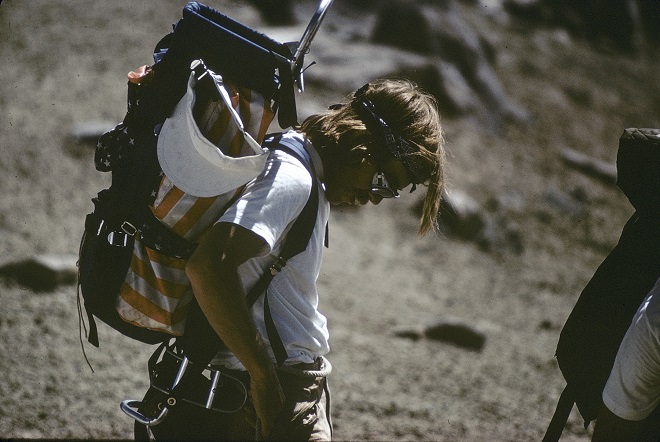
Douglas: That’s great. In terms of thinking forward and maybe passed on to different family generations down the road, when you look at about 400 years into the future, what’s one thing that you would love to see as far as the underlying principle carried on in JanSport, and the culture of JanSport?
Skip: I think there probably may be three values of still continuing to be a leader and be an innovative company. That is still true today with VF Corp actually, the parent company. They’ve invested heavily in innovation and they even set aside different funds within VF brands to pursue innovation maybe beyond what the budget would allow. And then quality product, that’s always been one of the values around making a quality product that consumers can rely on. And I think one of the main points that comes up when I lecture at colleges and stuff, I talk about having fun with the work you do and the people, and making sure the brand is fun and authentic. And maybe in 400 years I hope that’s the case. [Chuckle]
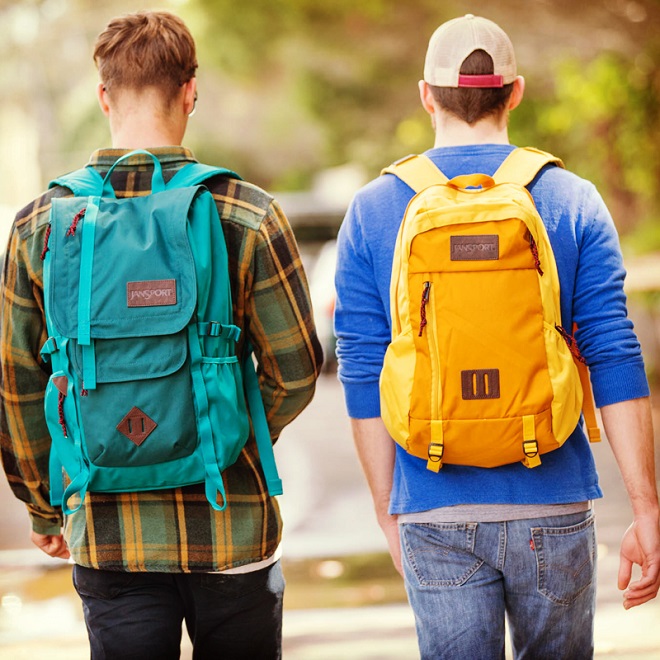
Douglas: [Chuckle] Well, perfect, Skip. Thank you so much for taking the time to share your insights.
Skip: Yeah, you bet!





 Carry Awards
Carry Awards Insights
Insights Liking
Liking Projects
Projects Interviews
Interviews
